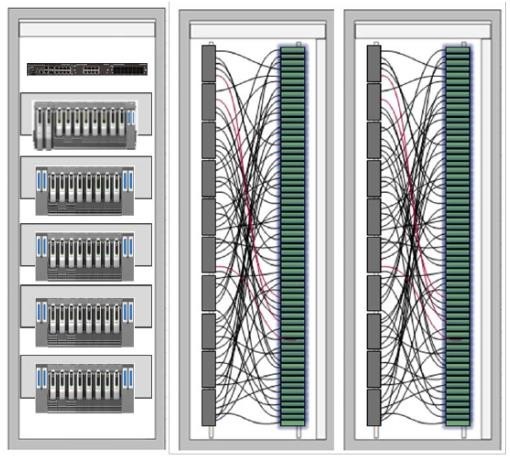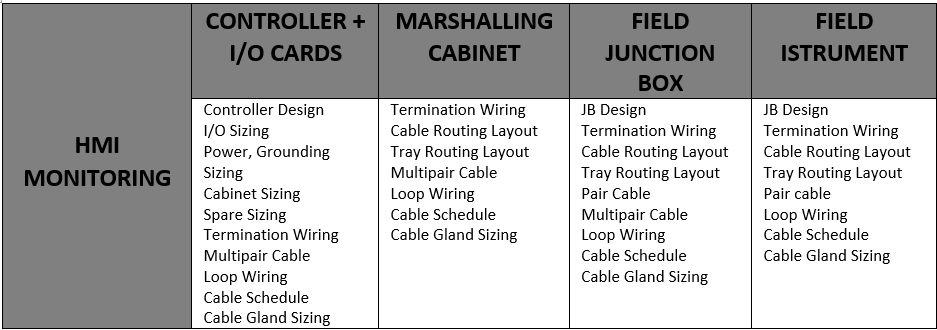INTRODUCTION
For years, connecting field devices to process control systems (PCS), safety instrumented system (SIS) and fire and gas system (FGS) has used the same technology. Typically, the traditional method is to use pair cables and multipair cable to send a signal from field to control room. Sure, there have been advances in fieldbus and even wireless networks, but for plain old wired devices, you connect a cable to a matching slot on an I/O (input/output) board at your controller.
Most of the time these traditional methods are tolerated, but it can cause problems when there are a lot of engineering works & drawings to be produced, especially when involving many individuals and high complexity.
TRADITIONAL WIRING
For decades, industry practice of getting field devices to the process automation system has been by means of traditional wired marshalling. The traditional wiring typically is basic 4-20mA signals, typical HART enabled, utilizing long runs of bundled twisted pairs, field junction boxes, cable tray/ladder and associated cross marshalling cabinets.
The way of wiring I/O to a distributed control system, technicians wire field devices to terminal blocks in marshalling panels located within an I/O room. Wires come in from the field through multi- core cables and connected to their appropriate I/O cards in controller cabinets. Wiring is cross- marshalled, so that each device gets connected to its appropriate I/O card and channel as shown in the figure below:

Unfortunately, the process is often frustrating for all concerned. Problems can occur at almost every step. For instance, during cross-marshalling, it becomes harder and harder to keep track of where every wire comes, and it may lead to error.
Every change adds cost, time, and most importantly risk to the job. To accomplish this, there are many tasks that involves a lot of work and complexity. The workflow as below;

A NEW APPROCH
The new way of wiring is by using electronic marshalling. Electronic marshalling can eliminate the usage of multicore cables by utilizing a single serial link/ fiber optic cable, thus removing the hassle of internal cross wiring and space required to lay the cables.
By using electronic marshalling, it allows for 100% utilization of channels regardless of I/O signal mix. Late changes are easily accommodated with minimal re-engineering and no rewiring. The I/O can be simply assigned to the control modules and their signals to any specific controller desired. Electronic marshalling indirectly reduces the footprint as shown in figure below:

The usage of electronic marshalling can be further utilized by replacing the use of traditional field termination junction boxes. Instead, the electronic marshalling I/O card can be placed in the junction box where the signal can directly terminate to the I/O card. This will eliminate the use of big cable ladder and multicore cables. Smaller serial link/ fiber optic cables and smaller cable trays can be used.
BENEFITS
- Fully redundant
- Field mounted capable
- The I/O card can be located anywhere whether at local I/O cabinet or at the
- Reduce overall system cost by eliminating internal cabinet cross wiring, reducing overall footprint and simplifying I/O channel
- Late changes can be done without the need of re-wiring.
CONCLUSIONS
Traditional hard-wiring approaches for I/O points in distributed control systems add considerable time and costs. So, the availability of Electronic Marshalling technologies has been an important advantage of the implementation. Now the full benefits of Electronic Marshalling can be even further improved and extended to the others technology such as solenoid valves. Users can receive full native diagnostics functionality; full redundancy; full interoperability — and the flexibility to make late changes anywhere, anytime. This simplifies implementation of systems with integrated valve manifolds, greatly reduces complexity, and eliminates learning curves. It cuts project risk and avoids potentially serious delays. Finally, it means substantial cost and time savings in wiring and components which helps in project schedule planning.
